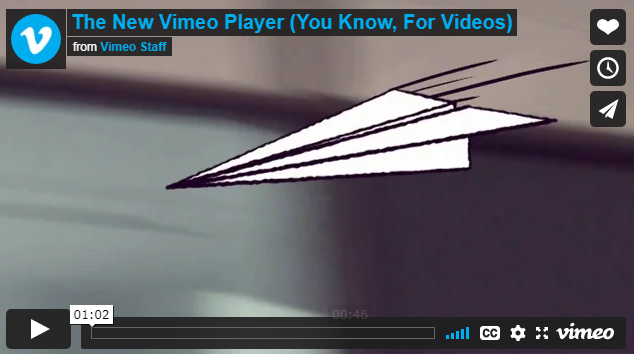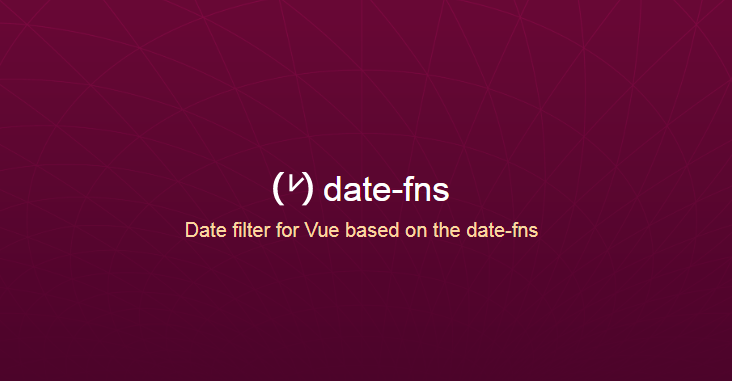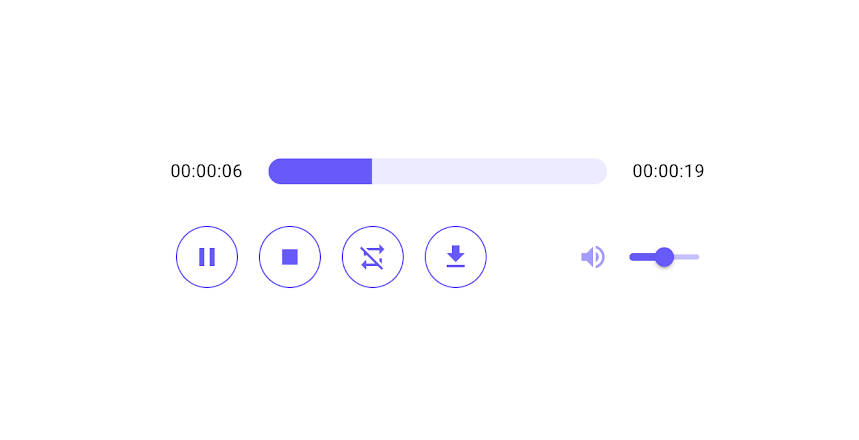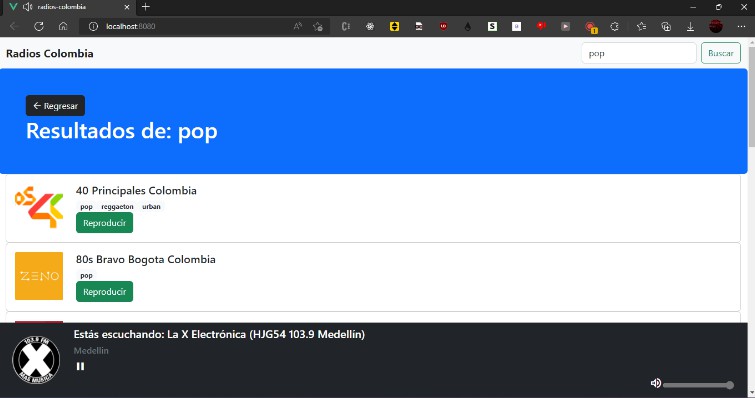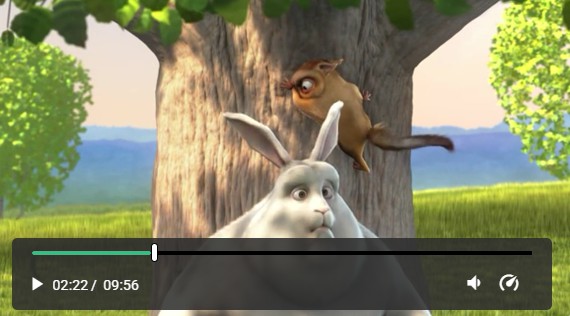vue-vimeo-player
Vue wrapper for Vimeo Embed Player.
Embed a Vimeo player as a Vue 3 component with ease, even with Nuxt.js SSR.
Installation
Using npm:
npm install vue-vimeo-player@next --save
of load it via CDN
<script src="//unpkg.com/vue-vimeo-player@next"></script>
Getting Started
You can either import it in your whole project
import vueVimeoPlayer from 'vue-vimeo-player'
import Vue from 'vue'
const app = Vue.createApp(App)
app.use(vueVimeoPlayer)
or import it locally in a component
import { vueVimeoPlayer } from 'vue-vimeo-player'
export default {
data: {},
components: { vueVimeoPlayer }
}
Usage without module bundler
Just include the script from the CDN and attach it to your app instance
<script src="//unpkg.com/[email protected]"></script>
<script src="//unpkg.com/vue-vimeo-player"></script>
<!-- .... -->
<vimeo-player :video-id='videoId'></vimeo-player>
<script>
const app = Vue.createApp(App)
app.use(VueVimeoPlayer.default)
app.mount(...)
</script>
Usage with Nuxt.js
As we know Nuxt.js allows the really cool advantage of Server Side Rendering, but this means there is no window variable.
To fix this, we need to tell Nuxt.js to skip rendering our component on the server and render it just on the Browser.
We need to create a file inside the plugins directory called vimeo-player.js or what ever you see fit.
// plugins/vimeo-player.js
import Vue from 'vue'
import vueVimeoPlayer from 'vue-vimeo-player'
const app = Vue.createApp(App)
app.use(vueVimeoPlayer)
Now we need to tell Nuxt to load our plugin inside nuxt.config.js
// ....
plugins: [
{ src: `~plugins/vimeo-player` }
],
build: {
vendor: [
'vue-vimeo-player'
],
}
// ....
Now we have to use the client-only component to wrap the vue-vimeo component in the template.
<client-only>
<vimeo-player ref="player" :video-id="videoID"/>
</client-only>
Props
| Prop | Type | Default | Description | Required |
|---|---|---|---|---|
| autoplay | Boolean | false | The video automatically begins to playback as soon as it can do. | No |
| player-width | String or Number | 640 | The width of the video's display area | No |
| player-height | String or Number | 320 | The height of the video's display area | No |
| options | Object | {} | Options to pass to Vimeo.Player. See the Vimeo docs | No |
| video-id | String | Vimeo player unique identifier | Yes | |
| video-url | String | undefined | Vimeo url to play video (if using private links) | No |
| loop | Boolean | false | Upon reaching the end of the video, automatically seek back to the start. | No |
| controls | Boolean | true | This parameter if `false` will hide all elements in the player (play bar, sharing buttons, etc) for a chromeless experience. ⚠️Warning: When using this parameter, the play bar and UI will be hidden. To start playback for your viewers, you'll need to either enable autoplay or use our player SDK to start and control playback. **(available to Plus, PRO, or Business members)** | No |
Methods
- update(videoID): Recreates the Vimeo player with the provided ID
- play()
- pause()
- mute()
- unmute()
Properties
Useful properties to interact with
- player - The instance of the Vimeo player
Events
Events emitted from the component.
The ready event only passes the player instance
- ready
Every other event has these properties: (event, data, player)
- play
- playing
- pause
- ended
- timeupdate
- progress
- seeking
- seeked
- texttrackchange
- chapterchange
- cuechange
- cuepoint
- volumechange
- playbackratechange
- bufferstart
- bufferend
- error
- loaded
- durationchange
- fullscreenchange
- qualitychange
- camerachange
- resize
Example
// app.js
import vueVimeoPlayer from 'vue-vimeo-player'
import Vue from 'vue'
import App from '@/App'
const app = Vue.createApp(App)
app.use(vueVimeoPlayer)
<template>
<vimeo-player ref="player" :video-id="videoID" :player-height="height" @ready="onReady"/>
</template>
<script>
export default {
data() {
return {
videoID: 'some-id',
height: 500,
options: {
muted: true,
autoplay: true,
},
playerReady: false
}
},
methods: {
onReady() {
this.playerReady = true
},
play () {
this.$refs.player.play()
},
pause () {
this.$refs.player.pause()
}
}
}
</script>
